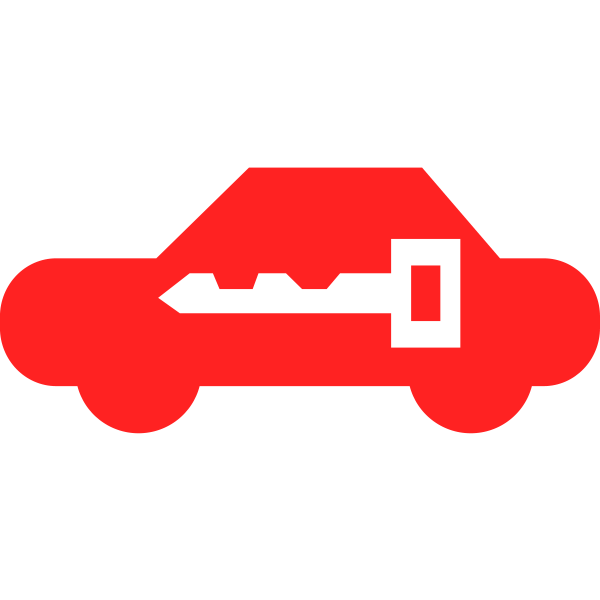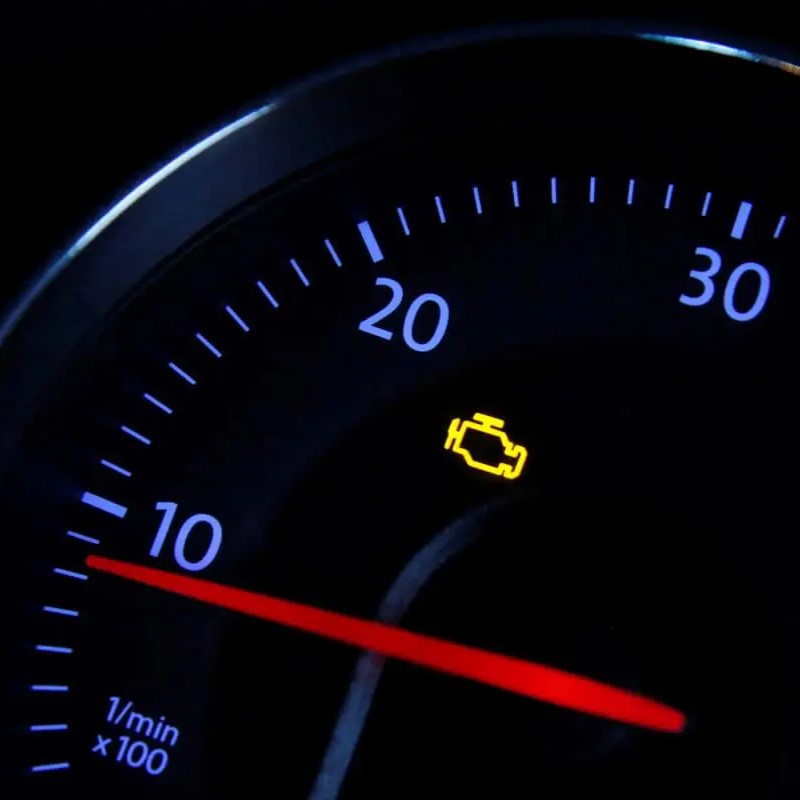What is an Anti-Lock Brake System?
ABS stands for Anti-lock Braking System. It’s crucial for modern driving safety. This system keeps your car wheels from locking during hard braking. By doing this, it helps you control steering when you brake hard.
The History of Anti-Lock Braking Systems
Anti-lock brakes started in aircraft as anti-skid systems. Car makers like Ford and Chrysler adopted it in the 1970s. Soon, the safety benefits made it a car standard.
By 2004, ABS became a required feature in all new cars in Europe. The tech has evolved but the focus on safety remains the same.
The Role of ABS in Vehicle Safety
The main role of ABS is to prevent skids. This lets you steer even under tough conditions. Having this system means a lower risk of collisions. It’s a lifesaver on both wet and dry roads. With ABS, you can avoid dangers without losing control of your vehicle.
How Does ABS Work?
Understanding how an Anti-lock Braking System (ABS) operates is essential for appreciating its role in vehicle safety. Let’s break down the functions and processes involved in simple terms.
The Mechanism Behind ABS Functionality
ABS prevents wheel lock-up by quickly modulating brake pressure during heavy braking. This process ensures that tires maintain traction with the road, allowing for safe steering and vehicle control.
Interaction Between ABS Sensors and the ECU
ABS sensors are located at each wheel, detecting rapid deceleration that could cause a lock-up. These sensors send signals to the car’s Electronic Control Unit (ECU), a computer that manages the ABS.
The ABS Activation Process
When potential wheel lock-up is detected, the ECU commands the brake system to reduce pressure to the affected wheel. This rapid ‘pumping’ action keeps the wheel rotating, preventing skidding and loss of control. By maintaining wheel rotation, ABS significantly enhances safety during emergency stops.
When is ABS Most Effective?
Anti-lock Braking Systems (ABS) perform best under specific conditions.
Optimal Conditions for ABS Performance
The ABS system is most effective during firm, quick braking. It’s designed to prevent skidding and maintain steering control. For the best ABS response, use it on dry or wet paved roads. A prompt brake press activates the system, helping you avoid hazards.
Limitations on Varied Terrains
While ABS helps on many surfaces, it has limitations. It’s less effective on ice, snow, or gravel. Some vehicles even allow drivers to turn off the ABS on rough trails. This helps wheels grip better on uneven surfaces. When ABS is on, it might not stop the vehicle as quickly on loose terrains.

The Benefits of Anti-Lock Braking Systems
Understanding Anti-Lock Braking Systems (ABS) requires knowing not just what they are or how they work, but also the benefits they offer. Let’s delve into some of the key advantages that ABS provides to drivers, ensuring a safer driving experience.
Enhanced Steering Control During Braking
ABS systems grant drivers greater command over their vehicle during abrupt stops. When you brake hard, ABS keeps your tires from locking. This means you can dodge obstacles while still steering. Essentially, ABS allows you to react quickly without sacrificing control.
Preventing Skids and Collision Likelihood
A locked wheel during a hard stop can lead to skid marks and, worse, collisions. By preventing lock-ups, ABS significantly lowers the risk of skids. It keeps tires rolling, so your car follows your steering. This safety feature is key in avoiding accidents on the roads.
ABS’s Role in Safe Cornering
ABS isn’t just about stopping; it’s also about maneuvering safely. While cornering at speed, it helps you maintain control. The system adjusts brake pressure on each wheel. This lets you navigate bends more safely, even if you unexpectedly need to brake.
Understanding the Limitations of ABS
While ABS offers many safety benefits, it’s not without its limitations. It’s crucial for drivers to understand these so they can adjust their driving appropriately.
Situations Where ABS Might Not Be Effective
ABS is highly effective on many surfaces, but there are instances where it may struggle. On icy or snowy roads, and gravel, ABS could actually lengthen stopping distances. Quick brake pressure modulation may not provide enough force to penetrate the slippery surface, leading to reduced braking efficiency.
Another situation is when tires are worn out. ABS can only be effective if the tires have sufficient tread to grip the road. If the treads are worn, the risk of skidding increases despite the ABS trying to prevent it.
Lastly, ABS may not perform well if the system’s sensors or components are faulty. Regular maintenance is vital to ensure the system functions correctly.
The Myth of ABS and Stopping Distances
There is a common misconception that ABS always reduces stopping distances. However, the main purpose of ABS is to maintain steering control during heavy braking, not necessarily to stop more quickly. ABS prevents wheel lock, which helps keep control, but can sometimes increase the time it takes to come to a complete stop, especially in conditions such as loose gravel or snow. Drivers should not rely solely on ABS to shorten stopping distances but should also maintain safe speeds and follow adequate distancing from the vehicle in front.

What to Do If Your Car Lacks ABS
Having ABS, or Anti-lock Braking System, in your car boosts safety significantly. But what if your car doesn’t have this feature? Here, we’ll discuss what you can do to maintain control of your vehicle during hard braking without the help of ABS.
Safe Braking Practices Without ABS
Without ABS, you must rely on other techniques to stop your car safely. These include:
- Pump the Brakes: Instead of slamming on your brakes, pump them gently and rapidly. This helps prevent wheel lock-up.
- Maintain a Safe Distance: Always keep a good distance from the vehicle ahead. It gives you more time to stop safely.
- Stay Alert: Be aware of road conditions. Adjust your driving and braking to match them.
- Use Engine Braking: Downshift to a lower gear in manual cars to slow down without hitting the brakes hard.
- Avoid Sudden Moves: Sudden braking or steering can lead to skids. Make gentle and gradual changes in your path or speed.
- Check Your Tires: Ensure your tires have enough tread. Worn-out tires reduce traction and increase the risk of sliding.
By following these techniques, you can enhance your driving safety even without the advantages of ABS.

Diagnosing ABS Problems
When the ABS light in your car illuminates, it’s a signal that there might be an issue with the system.
Recognizing Fault Indicators
The first sign of trouble is often the ABS light itself. If it stays on after starting the car, or comes on while driving, pay attention. It’s telling you to check the Anti-lock Braking System. Another indicator could be if the brakes feel different, like taking longer to stop.
Common Causes of ABS Light Activation
There are several reasons why the ABS light might come on:
- Low Brake Fluid: This can trigger the ABS light. Check your fluid levels first.
- Worn Brake Pads: Worn pads can impact the ABS function.
- Faulty Wheel Speed Sensors: These sensors are key to ABS operations. If they fail, the ABS light comes on.
- System Malfunctions: If there’s a glitch in the system’s electronics, the light may illuminate.
- Blown Fuse: Sometimes, the issue is as simple as a blown fuse in the ABS circuit.
By understanding what your car’s ABS light is telling you, you can take proactive steps to address any issues. Remember, ABS is crucial for your vehicle’s safety, so don’t delay in diagnosing any problems that arise.
Steps to Take When Your ABS Light Comes On
When your car’s ABS light goes on, it’s a call to action. This warning shouldn’t be ignored. Here are steps to ensure safety and address the issue properly.
Immediate Actions for a Lit ABS Light
- Check the Basics: Start by checking brake fluid levels. Low fluid can trigger the ABS light.
- Test Your Brakes: Gently apply the brakes to test their responsiveness. Don’t ignore any unusual brake behavior.
- Plan for Service: Arrange to have your car checked. A lit ABS light often means a system checkup is due.
- Drive with Caution: If the ABS light is on, drive extra carefully. Your brakes may react differently.
Make sure to act on these points quickly. Delay can mean risking your safety.
The Seriousness of Simultaneous ABS and Brake Warning Lights
If both ABS and brake warning lights turn on together, it’s serious. This combination warns of a major brake system problem.
- Stop Driving: Find a safe place to pull over. Continuing to drive could be unsafe.
- Check for Obvious Issues: Look for visible leaks or damage. Don’t attempt to fix these yourself.
- Call for Help: Use a roadside assistance service. They can guide you on what to do next.
- Avoid DIY Fixes: Unless you’re a skilled mechanic, don’t try to troubleshoot serious brake issues yourself.
In this situation, it’s best to have professionals check your car as soon as possible.
How to Troubleshoot ABS Light Issues
Experiencing an ABS light on your dashboard can be concerning. It’s a sign to pay attention to your brake system.
Simple DIY Checks to Resolve ABS Light Problems
If you notice the ABS light, here are few things you can do:
- Check the Brake Fluid Level: Sometimes the solution is just to fill up the brake fluid.
- Inspect the ABS Fuse: A blown fuse might be causing the light to stay on.
- Clean the Wheel Speed Sensors: Dirt on sensors can cause false signals.
- Look at the Brake Pads: Worn pads impact ABS performance. Make sure they’re in good shape.
These simple checks often resolve the ABS light issue without a visit to the mechanic.
When to Seek Professional Assistance
Sometimes, the issue isn’t simple. Here’s when to get expert help:
- Persistent ABS Light: If the light stays on, a pro should check it.
- Brake Performance Changes: Any difference in how brakes feel requires immediate attention.
- Combination of Warning Lights: If the ABS and brake lights are on together, call for assistance.
- Uncertainty: If you’re not sure about DIY checks, it’s best to consult a professional.
Experts use specialized tools to diagnose and fix ABS issues accurately.





